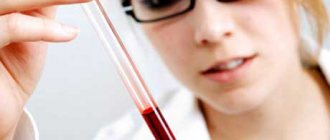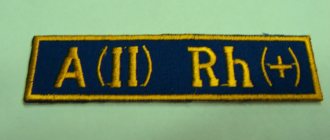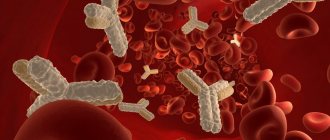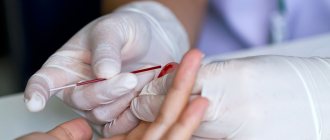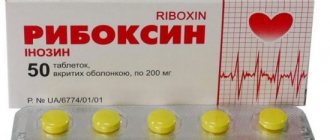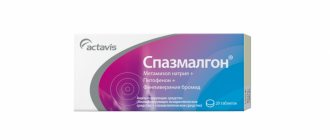In modern laboratories, dozens of different tests can be performed, which help evaluate many processes in the body and play a huge role in the diagnosis of most diseases. According to statistics, 70% of decisions made by doctors are based on laboratory test data.
Over the past decades, laboratory diagnostics have become very accurate, but, unfortunately, sometimes the test results are erroneous. And it's not always the laboratory's fault. The preanalytical stage and proper preparation of the patient play a huge role. This is where about half of the mistakes occur. The result is distorted results, incorrect conclusions, incorrect treatment and unnecessary additional diagnostic methods.
One possible cause of errors in laboratory diagnostics is lipemia , a condition in which there are high levels of lipids in the blood. It occurs in 1–5 samples out of 200 received by the laboratory, and is much more common in outpatients than in inpatients. The main reason is that patients do not maintain the required interval between the last meal and blood donation. Unfortunately, not everyone knows how to properly take tests on an empty stomach, and doctors do not always explain well and cannot control the situation.
| A brief excursion into biochemistry: what are blood lipids? Fats and fat-like substances (cholesterol, triglycerides, phospholipids) are combined under the term “lipids”. By themselves, they cannot dissolve in water, so they are found in the blood plasma in the form of complexes with proteins - lipoproteins. There are several types of lipoproteins, they differ in composition, size and functions:
Lipemia refers to the cloudiness of a blood sample due to high levels of lipoproteins. |
Why does lipemia occur?
The most common reason is improper patient preparation. After eating a meal, especially a fatty one, the content of chylomicrons in the blood increases for several hours. Often, doctors simply say that you need to show up for tests in the morning on an empty stomach. Everyone can understand this in their own way. For example, a person can have dinner very late, then sleep a little and come to the clinic in the morning without breakfast, but the required interval will not be maintained. In emergency situations, when analysis needs to be done immediately, there is often no time to find out when the patient last ate.
This is why doctors at the Center for Immunology and Reproduction tell patients in such detail how to properly prepare for tests. It is important to strictly follow these recommendations.
Other possible causes of lipemia:
- Recent introduction of fat emulsions for parenteral (intravenous) nutrition. They are usually used in intensive care units and in patients who cannot feed themselves or are unable to feed through a tube. These are drugs such as Intralipid, SMOFlipid, Lipofundin, Lipovenoz.
- Primary lipemia is a hereditary disorder of lipid metabolism.
- Secondary lipemia is a condition that is a symptom of other diseases, such as non-alcoholic fatty liver disease, diabetes mellitus, HIV infection, and renal dysfunction.
- Excessive alcohol consumption, alcoholism.
- Taking certain medications: antiretroviral drugs, glucocorticosteroids, non-selective beta-adrenergic receptor antagonists.
- There is evidence that ketogenic diets increase blood cholesterol and triglyceride levels.
Three enemies of biochemistry
06.05.2021
1 - normal and icteric 2 - normal and chylosis 3 - normal and hemolysis
1) Hemolysis
Hemolysis can occur:
— Due to a violation of the preanalytical stage of blood sampling.
— In certain pathologies (diseases), pathological hemolysis occurs. That is, cells are destroyed much faster than necessary. Such processes occur in infectious diseases, poisoning with plant or synthetic poisons, hemolytic anemia, autoimmune diseases, after transfusion of inappropriate donor blood.
The hallmark of hemolysis is a clear, red serum after centrifugation of the blood. This coloring of the serum leads to a distortion of the true values of biochemical parameters. Therefore, it is necessary to repeat the selection of material to verify true pathological hemolysis.
2) Chylosis/lipemia
Chylesis is a physical clouding of the serum due to the presence of large amounts of fats (triglycerides and chylomicrons).
You may encounter this situation:
If the blood was not taken on an empty stomach. In this case, chyle is caused by “gastronomic” reasons: eating fatty, spicy, smoked foods, dairy (fermented milk) products, as well as alcoholic beverages, eggs, chocolate, bananas, etc. on the eve of blood (plasma) donation.
In all other cases, chylosis indicates a metabolic disorder. If the diet contains a lot of fatty foods and animal proteins, a disorder of lipid metabolism occurs, therefore, the blood serum will be fatty.
First of all, when chyle is detected, it is necessary to re-take a blood test, adhering to the above recommendations before this procedure, and if chyle is confirmed, consult a doctor.
3) Ictericity
Icterus is due to:
Most often, various liver diseases, in which the level of bilirubin in the blood rises sharply.
Sometimes an increase in the level of bilirubin in the blood can be associated with prolonged fasting of the patient on the eve of the test, although even a very long absence of food intake in a completely healthy person rarely leads to icterus in the resulting blood serum.
A high concentration of bilirubin in the blood can distort the value of a laboratory indicator. However, it should be borne in mind that it is not always possible to correct the increased level of bilirubin in the blood; in this case, you need to notify the laboratory about the characteristics of the patient’s health condition and this will be taken into account when performing research.
Laboratory diagnostics doctor (head)
Clinical diagnostic laboratory of the city clinic No. 4, Grodno Nefedova L.I.
How does lipemia interfere with testing?
Lipemia can interfere with blood tests in several ways:
- Increases light absorption. Because of this, the results of spectrophotometric analysis, which are used during biochemical blood tests, are distorted. The accuracy of studies that use light with a short wavelength suffers especially severely. The device determines the concentrations of some substances, for example, ALT, AST, bilirubin, incorrectly.
- Lipoproteins prevent antibodies from binding to antigens. As a result, the results of immunological tests are distorted. Depending on the nature of the reaction, they can turn out to be false positive and false negative.
- Distorts the results of studies in which the method of capillary electrophoresis of whey proteins is used. For example, it was noted that when analyzing blood with lipemia, the alpha-2-globulin fraction changes.
- Leads to heterogeneity of plasma and serum after centrifugation. In a centrifuge, VLDL, due to its low density, accumulates in the upper layer. Accordingly, there will be very few substances that are soluble in water. During analysis, their concentration will be incorrectly determined as low. At the same time, steroid hormones and some drugs accumulate in the upper lipid layer, and their concentration will be low in the lower part of the tube.
- Leads to the effect of volume displacement. Normal blood plasma consists of 92% water and 8% lipids. With lipemia, these figures can be 75% and 25%, respectively. But electrolytes are dissolved only in plasma, they are not in lipids. If the laboratory uses methods that determine the level of electrolytes in the total volume (indirect potentiometry, flame photometry), then their concentration will be lower than it actually is.
- With lipemia, hemolysis occurs more strongly - the destruction of red blood cells and the release of hemoglobin from them. This also interferes with the analysis and affects its accuracy. It is not entirely clear why lipids lead to this effect; it is believed that they act on the wall of red blood cells during the processing and centrifugation of blood as detergents (surfactants).
Lipemia in serum or plasma samples
Lipemia is a source of analytical errors in the laboratory that must be eliminated before biochemical testing begins.
A group of scientists conducted large-scale studies to determine whether it was possible to eliminate lipemia from serum/plasma samples without using the ultracentrifugation method.
Research methodology
Seven laboratories in Spain took part in the study.
The first step was to compare the effectiveness of ultracentrifugation (acceleration 108,200 g) and high-speed centrifugation (acceleration 10,000 g for 15 minutes) in removing lipemia.
At the second stage, the scientists compared the results of high-speed centrifugation with two methods: liquid extraction - LipoClear (StatSpin, Norwood, made in the USA) and with a treatment method with 1,1,2-trichlorotrifluoroethane (Merck, Darmstadt, made in Germany). The results were assessed by 14 biochemical parameters: serum/plasma concentrations of sodium ions, potassium ions, chloride ions, glucose, total protein, albumin, creatinine, urea, alkaline phosphatase, gamma-glutamyltransferase, alanine aminotransferase, aspartate aminotransferase, calcium and bilirubin. It was analyzed whether the differences between lipemia removal techniques exceeded the limit of clinically significant interference (LCSI).
Results:
The research results showed that when comparing ultracentrifugation and high-speed centrifugation techniques, no parameter exceeded the limits of interference (LCSI). The difference was observed only when compared with extraction methods and treatment with 1,1,2-trichlorotrifluoroethane. The differences found concerned only such parameters as protein, calcium, aspartate aminotransferase, protein, albumin, and calcium. Differences in other parameters did not exceed LCSI.
Expert opinion:
Currently, the problem of lipemia is quite acute. As a rule, when a lipemic sample is received, the biomaterial is requested again. One of the methods for preventing the receipt of low-quality samples was and remains compliance with the rules for preparing patients for blood donation (donating blood on an “empty stomach”)
Currently, one of the additional tools for identifying and leveling interfering substances is the presence of a HIL detector in the device, which will allow CDL to standardize the conditions of the preanalytical stage.
How do laboratories detect lipemia?
Lipemia can be seen with the naked eye. The blood of such patients appears cloudy. This method is not reliable. Lipemia can be noticed only if the concentration of triglycerides is very high: in the supernatant - more than 3.4 mmol/L, in whole blood - more than 11.3 mmol/L. This is very subjective; not every laboratory technician can examine the changes that are recorded using special tests.
Many laboratories test for triglyceride concentrations. This method makes it possible to indirectly judge the presence of lipemia and, in combination with determining the L-index (more about it below), judge its cause. But this study has two shortcomings:
- The content of triglycerides in different types of lipoproteins varies: for example, in VLDL it is about 50%, in chylomicrons – up to 85–90%.
- In most of these assays, triglyceride concentration is inferred from the oxidation of glycerol to dihydroxyacetone phosphate. The more triglycerides, the faster glycerol oxidizes. If there is a lot of glycerol in the sample, a false positive result will be obtained. Such cases are known in patients with certain genetic disorders, among lovers of beer that contains glycerin.
Currently, automatic determination of the L-index is most often used. The essence of the method is that a blood sample is diluted in saline or a special buffer solution and the absorption spectrum of light of a certain wavelength (300–700 nm) is measured. The more lipids in a sample, the more it absorbs light.
Automatic determination of the L-index is a fast, inexpensive and fairly accurate method for detecting lipemia. But it also has some disadvantages. You can get a false positive result when the blood plasma is cloudy due to the content of other substances, for example, paraprotein (an “incorrect” immunoglobulin protein that appears in the blood in some diseases), contrast dyes that are used during some medical procedures.
Test systems for automatically determining the L-index are produced by different manufacturers; there is no single standard, and this makes it difficult to interpret the analysis results. Thus, errors are also possible when using this method, although they are rare.
General rules for preparing for blood tests
- Eating
- Medications
- Physical activity and emotional state
- Alcohol and smoking
- Physiological state of a woman
- Times of Day
- Hemolysis
- Lipemia
- Ictericity
Eating. Eating on the eve of taking blood for analysis can greatly distort the result, and in some cases lead to the impossibility of performing research. This is explained by the fact that after nutrients are absorbed in the intestines, the concentration of proteins, fats, carbohydrates and other compounds in the blood increases sharply, enzyme systems are activated, blood viscosity may change, and the level of some hormones temporarily increases. All these factors can directly affect the concentration of the test substance, and also, due to changes in the physical properties of the blood itself (its “transparency”), lead to incorrect measurement of the analyte by the device.
In all cases, before donating blood, it is recommended to adhere to several rules:
- do not eat fatty foods several hours before the test, it is advisable not to eat for 4 hours - a high concentration of fats in the blood can interfere with any test;
- shortly before taking blood, drink 1–2 glasses of ordinary still water; this will reduce the viscosity of the blood, and it will be easier to take a sufficient volume of biomaterial for research; in addition, it will reduce the likelihood of clots forming in the test tube.
Medications. Any medicine and dietary supplements (dietary supplements) affect the body in one way or another. In general, their effect on laboratory parameters is known, but much is determined by the physiological characteristics of a particular person, as well as the presence of diseases. Therefore, it is almost impossible to accurately predict how study results will change depending on any drug.
In this regard, it is recommended:
- in agreement with the attending physician, stop taking medications at least one day before the test;
- in agreement with the attending physician, stop taking dietary supplements containing biotin (vitamin H, vitamin B7): - at a dosage higher than 5 mg per day - at least one day before the test; - at a dosage higher than 10 mg per day - at least two days before the tests;
- When taking tests while taking medications and dietary supplements, be sure to inform the clinic nurse.
Physical activity and emotional state. Any physical activity leads to the activation of a number of enzyme and hormonal systems. The concentration of many biologically active substances in the blood increases, internal organs begin to work more intensively, and metabolism changes. Against the background of stress, the sympatho-adrenal system is activated, which, in turn, triggers mechanisms leading to changes in the activity of many internal organs, to the activation of enzyme and hormonal systems. All this can affect the test results.
In order to exclude the influence of physical activity and psycho-emotional factors on the day of testing, it is recommended:
- do not play sports;
- eliminate increased emotional stress;
- a few minutes before taking blood, take a comfortable position (sit down), relax, calm down.
Alcohol and smoking. Alcohol has a variety of effects on the human body. It affects the activity of the nervous system, which, as is known, regulates all physiological processes occurring in the body. The products of alcohol metabolism can affect many enzyme systems, cellular respiration, and water-salt metabolism. All this can lead to changes in the concentration of most biochemical parameters, changes in the level of hormones in the general blood test, etc. Smoking, by activating the nervous system, increases the concentration of certain hormones and affects vascular tone.
To exclude the influence of alcohol and smoking on test results, you should:
- refrain from drinking alcohol for 72 hours before taking the test;
- do not smoke at least 30 minutes before taking blood.
Physiological state of a woman . The concentration of sex hormones and their metabolites in a woman’s body changes significantly over the course of a month. In this regard, tests for many hormonal indicators are recommended to be taken strictly on certain days of the menstrual cycle. The day of blood donation is determined based on which particular link of hormonal regulation needs to be assessed.
Another important physiological condition that influences research results is pregnancy. Depending on the week of pregnancy, the concentration of hormones and some specific proteins in the blood and the activity of enzyme systems change.
To obtain correct test results, it is recommended:
- clarify the optimal days of the menstrual cycle (or pregnancy period) for donating blood for follicle-stimulating hormone (FSH), luteinizing hormone (LH), progesterone, estradiol, androstenedione, 17-hydroxyprogesterone, prolactin, as well as specific markers: inhibin B and anti-Mullerian hormone;
- When filling out the referral form, it is necessary to indicate the phase of the menstrual cycle or the duration of pregnancy - this guarantees obtaining reliable research results with correctly indicated ranges of normal (reference) values.
Times of Day. The concentration of many substances in the human body changes cyclically throughout the day. This applies not only to hormones, but also to some biochemical parameters and specific markers (for example, metabolic markers in bone tissue). For this reason, it is recommended to take some tests strictly at certain times of the day. If a laboratory indicator is monitored, it must be repeated at the same time.
Hemolysis
What is hemolysis? Hemolysis, as a laboratory concept, is the destruction of red blood cells ("red blood cells") in a blood sample, releasing various biologically active substances and, most importantly, hemoglobin into the plasma.
Why does hemolysis occur? Hemolysis is most often caused by the physiological characteristics of the human body who donated blood, as well as by a violation of the blood sampling technique.
Why is it often impossible to perform analysis on hemolyzed blood? The analysis is “hampered” by those substances that enter the plasma from red blood cells. Mainly it is hemoglobin. With many tests, the test equipment may misinterpret the result and produce an incorrect result.
Lipemia
What is lipemia? Lipemia is a high concentration of lipids (fats) in a blood sample. Lipemic serum has a yellowish-white color, the severity of which directly depends on the concentration of fats and, therefore, the degree of lipemia.
Why does lipemia occur? Most often, lipemia is caused by eating a large amount of fatty foods shortly before donating blood. Also, the presence of lipemia is possible in some diseases in which metabolism and, in particular, fat metabolism are disrupted. The occurrence and extent of lipemia, as a rule, does not depend on the blood collection procedure and subsequent preanalytical actions with the sample.
Why is it often impossible to analyze serum with lipemia? A high concentration of fats in the blood can distort the laboratory value. This is due to the characteristics of the research methods and equipment on which the analyzes are performed.
Ictericity
What is icterus? Icterus is a high concentration of bilirubin and its derivatives in a blood sample. Icterus occurs in various liver diseases and some hereditary diseases. Icteric serum has a bright yellow color, the hue of which directly depends on the concentration of bilirubin in it, and, consequently, the degree of hemolysis.
Why does serum icterus occur? Icterus is most often caused by various liver diseases, in which the level of bilirubin in the blood rises sharply. Sometimes an increase in the level of bilirubin in the blood can be associated with prolonged fasting of the patient on the eve of the test, although even a very long absence of food intake in a completely healthy person rarely leads to icterus in the resulting blood serum.
Why is it often impossible to analyze icteric serum? A high concentration of bilirubin in the blood can distort the value of a laboratory indicator. This is due to the characteristics of the research methods and equipment on which the analyzes are performed.
